中国日报网 2024-03-05 11:27:25
Fireworks aside, the next best thing (or maybe the best thing actually) about Spring Festival is all the scrumptious traditional foods that go along with it. But what should you eat/gift and why during this more festive of Chinese festivals? Read on ...
Dumplings (饺子, jiǎo zi)
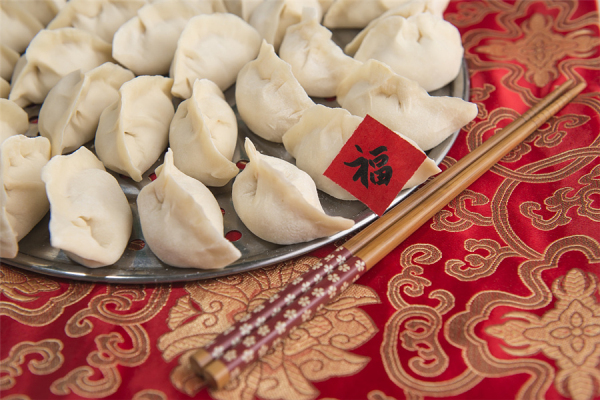
Traditionally made and eaten at home on the first day of Spring Festival, dumplings represent change and fecundity in the new year. The shape of dumplings resembles ancient Chinese gold ingots (金锭, jīn dìng) so they are a particularly wealthy omen. Some people even hide one jiao and five jiao coins (一角和五角硬币, yī jiǎo hé wǔ jiǎo yìng bì) inside the dumplings (much like the British tradition of hiding a silver sixpence in the Christmas pudding), which are thought to bring good fortune to whoever finds them.
Fish (鱼, yú)
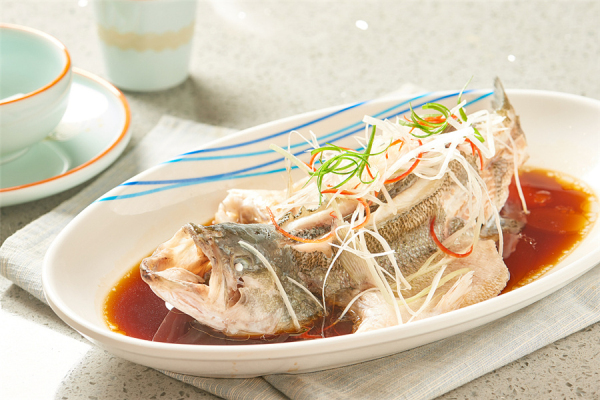
The popularity of fish on the Spring Festival table stems from the fact that the Chinese word for fish (鱼, yú) is a homonym (谐音, xié yīn) for surplus (余, yú). Fish is typically served whole at this time of year, and some families may choose to leave a little bit of the meat behind, putting the linguistic association into practice.
Yuanxiao (元宵, yuán xiāo)
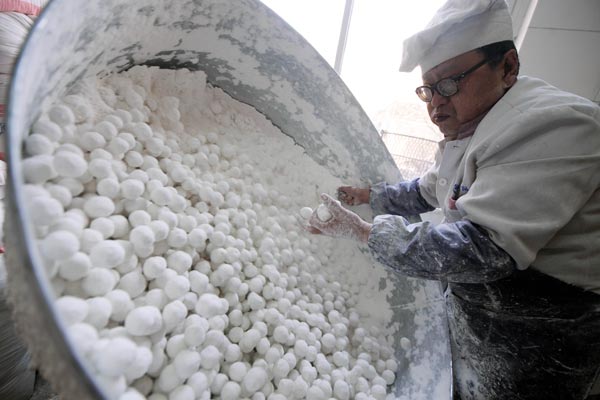
Next on our list of Spring Festival foods, yuanxiao (or tangyuan) (汤圆, tāng yuán) are balls of glutinous rice flour (糯米粉, nuò mǐ fěn) cooked and served in a light sugar syrup. They may be large or small, filled (有馅儿的, yǒu xiàn ér de) (with sesame, peanuts or red bean paste)(芝麻、花生或红豆沙, zhī ma、 huā shēng huò hóng dòu shā) or unfilled. Yuanxiao literally means "first evening (第一个夜晚, dì yī ge yè wǎn)," referring to the first full moon (第一个月圆之夜, dì yī ge yuè yuán zhī yè) after Chinese New Year (春节, chūn jié), when Lantern Festival (元宵节, yuán xiāo jié) is held.
Niangao (年糕, nián gāo)
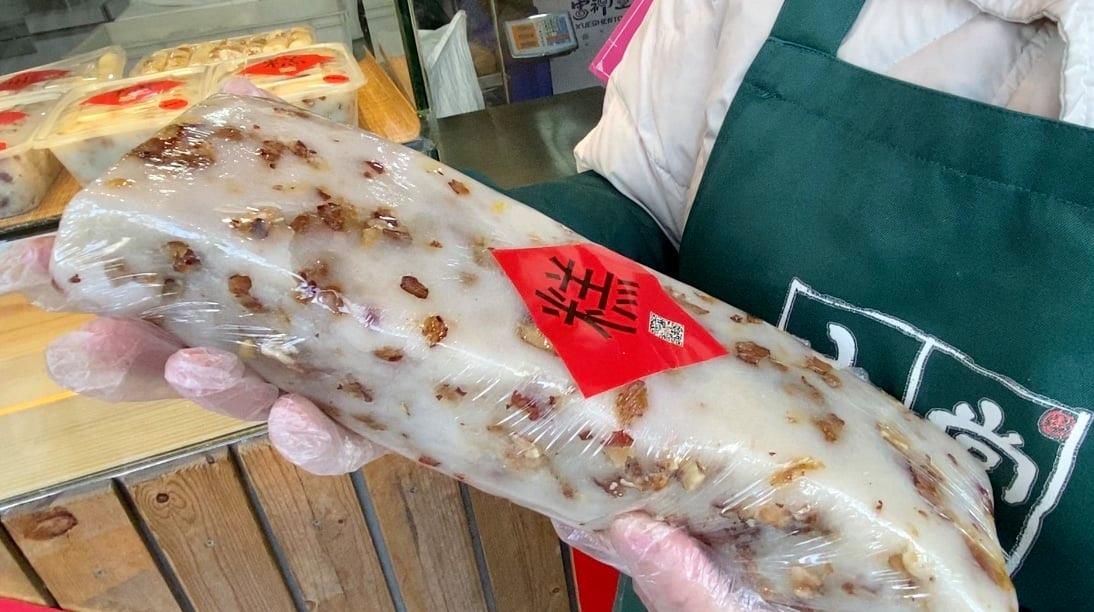
Another homonym (谐音, xié yīn) food, niangao (年糕, also known as Chinese New Year Cake) sounds like 年高, which means 'higher year,' or more grammatically accurately, an increasingly prosperous year. There are many styles of niangao around China, of which our favorite are the Cantonese style (广式年糕, guǎng shì nián gāo), which is sweetened with brown sugar (红糖, hóng táng) and steamed in a round cake, and Shanghainese style, which is often sliced and stir-fried with pork and cabbage.
Spring rolls (春卷, chūn juǎn)
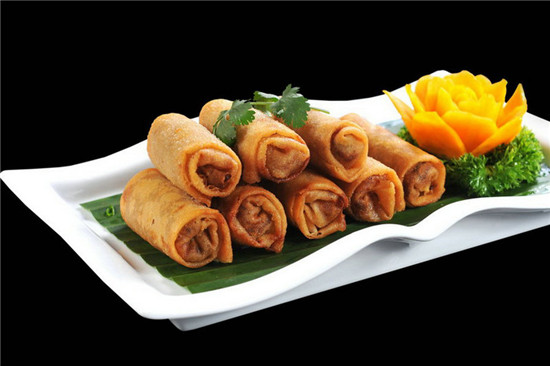
With their shape like gold bars (金条, jīn tiáo) (kind of, if you squint...), spring rolls represent wealth in the coming year. This tradition is more common in southern China and overseas Chinese communities.
Hot Pot (火锅, huǒ guō)
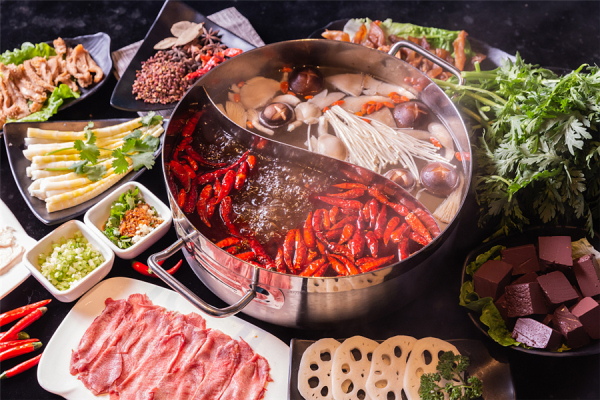
Perhaps not strictly a Spring Festival dish, but hot pot embodies the communal aspect of the many reunion dinners held around Spring Festival. Not to mention, you can dip other Spring Festival foods, such as the aforementioned niangao, in the pot.
Citrus fruit (柑橘类水果, gān jú lèi shuǐ guǒ)
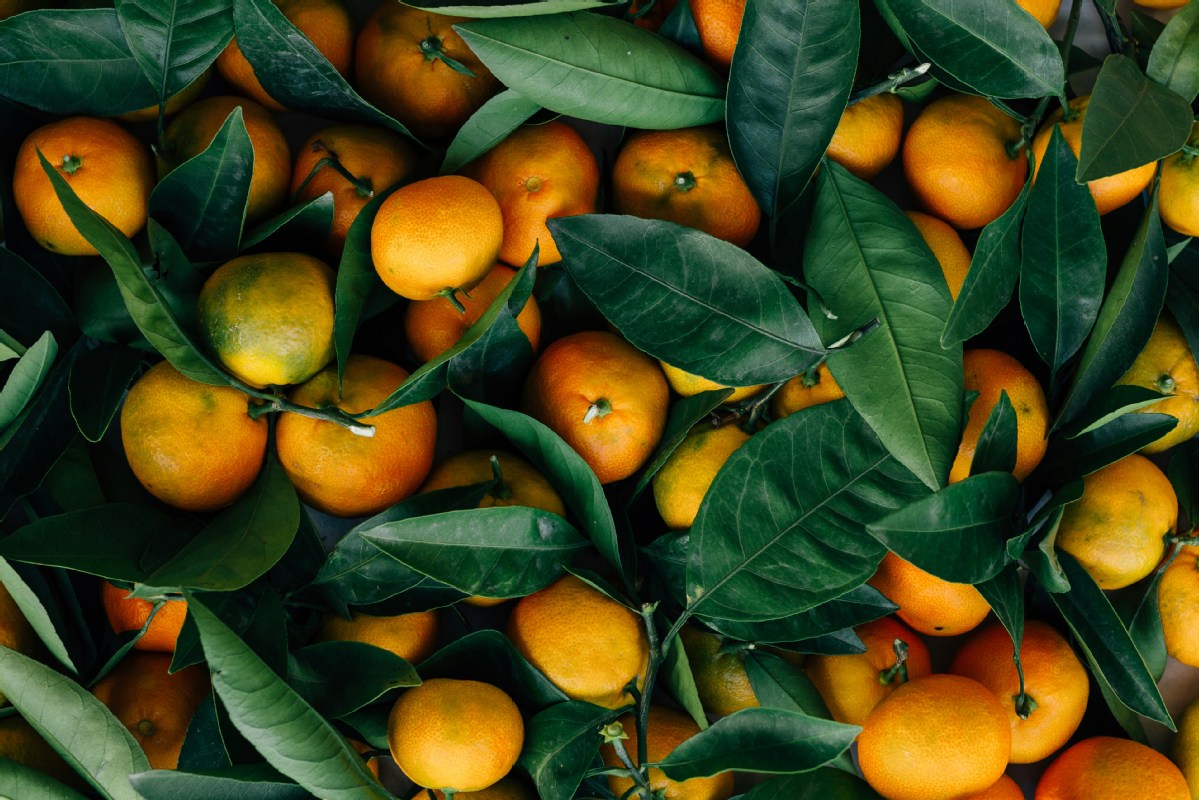
With their bright color, oranges, tangerines, and the like are associated with abundance and happiness. The words orange and tangerine also sound like gold and luck, depending on which Chinese dialect (方言, fāng yán) you speak. Ideally, the fruit should be bought with the leaves still attached, which symbolizes longevity.
Poon choi (盆菜, pén cài)
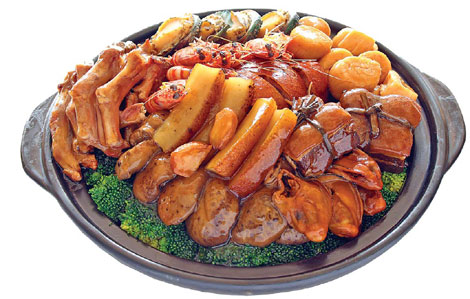
Often translated as "big bowl feast (大盘菜, dà pán cài)," "basin cuisine (盆菜, pén cài)," or "Chinese casserole (砂锅菜, shā guō cài), poon choi originated from the New Territories in Hong Kong (香港新界, xiāng gǎng xīn jiè), where it got it starts as a celebratory dish for guests visiting the villages. Primarily composed of choice cuts of meat and the best fresh and dried seafood, the story goes that poon choi leaves out lower-priced vegetables out of respect for guests. Although not specifically Spring Festival-related, poon choi is a popular choice for New Year reunion dinners (年夜饭, nián yè fàn) both in Hong Kong and increasingly around China.
责编:田梦瑶
一审:田梦瑶
二审:秦慧英
三审:黄晓辉
来源:中国日报网
我要问



 下载APP
下载APP 报料
报料 关于
关于
 湘公网安备 43010502000374号
湘公网安备 43010502000374号